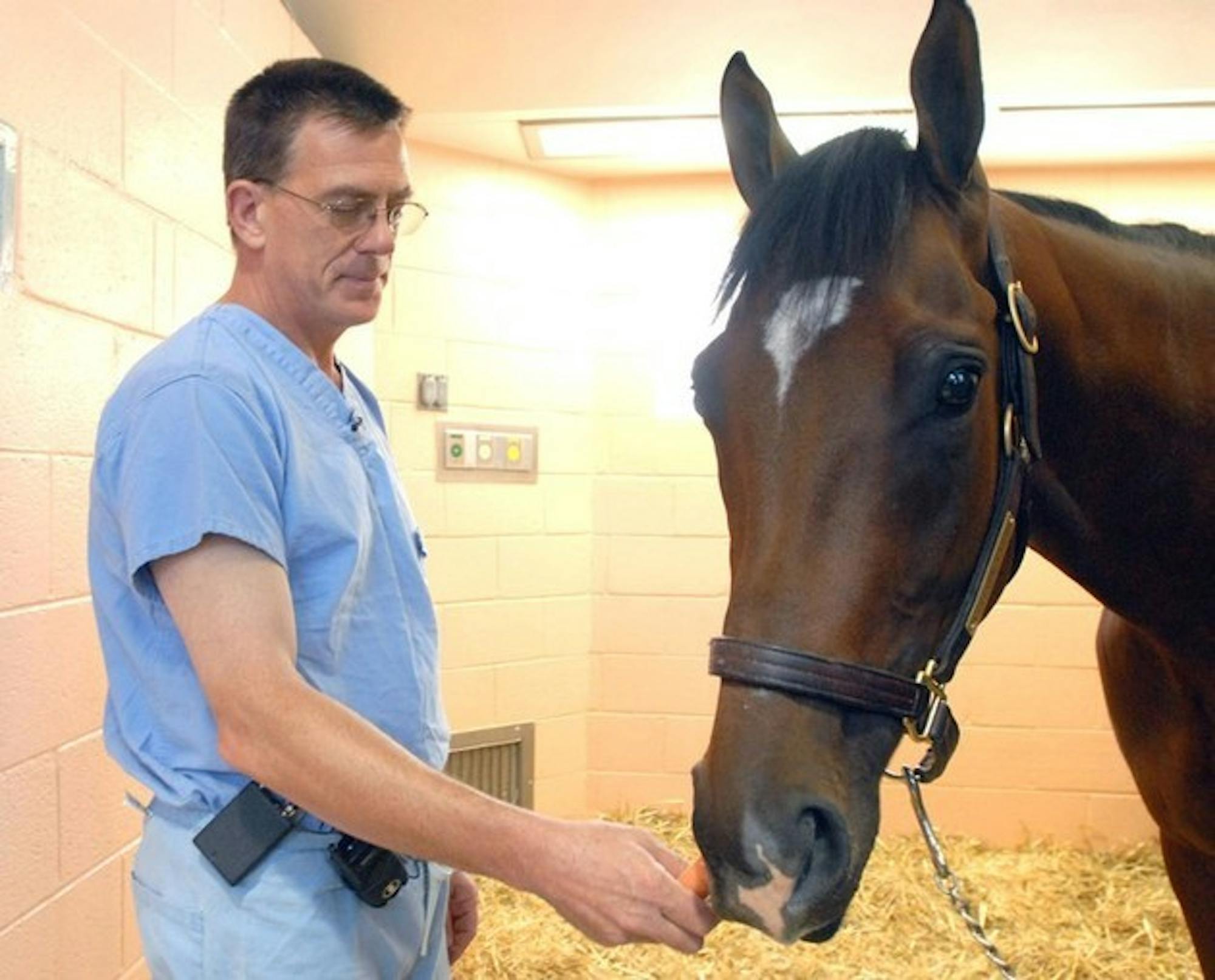The three-year-old colt, who earned $2.3 million since he started racing last October, suffered life-threatening injuries to his right hind ankle in Baltimore, Md., about five weeks ago at the Pimlico Race Course.
On May 20, in front of a record Preakness Stakes crowd, the horse fractured three bones in his right hind ankle only 130 meters into his seventh race. Barbaro, the heavy favorite at Preakness Stakes and the horse that had been expected to win the Triple Crown, saw his racing career come to a sudden end.
Barbaro had been smart. And lucky. He galloped on three legs and did not attempt to stand on his broken leg for the critical moment immediately following his injury. If he had tried to balance on his injured leg, he probably would have died.
Had Barbaro been injured a month earlier, he probably would have been put down on the track, as is common practice with horses who suffer such injuries. But Barbaro had been insured and would be a valuable and expensive stallion to own after his Derby win.
Richardson, the 52-year-old chief of surgery at the University of Pennsylvania's George D. Widener Hospital for Large Animals, had been assisting a friend in Florida on some complex surgeries at the time of Barbaro's injuries. He had just finished a seven-hour-long surgery and rushed to watch the horse's fateful race on television. As the preeminant equine surgeon in the country and an acquaintence of Barbaro's owners, he instinctively knew that Barbaro would eventually be in his care.
Soon enough, Richardson's cell phone rang -- first from the veterinarians at the race, then from the horse's owners, Roy and Gretchen Jackson.
The next day, Richardson caught an 8 a.m. flight back to the University of Pennsylvania's School of Veterinary Medicine at New Bolton Center in Kennett Square, where he had spent all 27 years of his veterinary career. At 1 p.m. on May 21, Richardson and his staff of 10 doctors and nurses started to repair the fractures in Barbaro's leg. The team did not finish until about 7 p.m.
"Barbaro presented us with a case that was about as difficult as such an operation could be," Richardson said in a statement after the surgery.
The horse had recovered beautifully after his surgery. The blood supply to the injured leg had been steady. He had been eating well and making passes at the mares in the stables. On June 13, his cast was replaced successfully. Although Barbaro will not be able to race again, he will likely reclaim his strength in a few months and be ready to mate.
Fans of the horse sent in flowers, cards and candy to the injured hero but did not forget to show gratitude to the man who had saved him; Richardson became as famous as the Derby winner.
Richardson had not always wanted to be a veterinarian. In 1970, 16-year-old Richardson, a third-generation Dartmouth man born in Hawaii, enrolled at the College intending to major in theater.
"I wanted to go to school outside of an urban setting," he said, "and my family had a long tradition at Dartmouth; both my father and grandfather were alumni."
"I did the theater stuff for the first couple of years and then realized I didn't have quite enough talent," Richardson said.
But a physical education class that Dartmouth mandated changed his trajectory. Richardson had done most of the activities listed on the physical education directory except for horseback riding, so he decided to enroll in a course taught by Marilyn Blodgett. He fell so in love with horses that he eventually decided to major in biology.
"Dean was very enthusiastic," Blodgett recalled. "He had never ridden until he came up to our place but within two weeks, he learned to walk, trot and canter and even started to jump. He was a remarkable athlete."
Blodgett moved most of the horses to a farm in the Berkshires in 1973 but Richardson and Peter Blodgett '74, Marilyn's oldest son, moved into the Velvet Rocks Farm during their junior and senior years and cared for 18 horses on the eight-acre farm.
"I spent a lot of time with horses when I was at Dartmouth. I lived and worked at horse farms the last two years of college," Richardson said. "But I also skied, played basketball and other intramural sports. I was also involved in Film Society and worked in Thayer back when the leftovers went to the pig farmers. But obviously, I have no idea what I would have ended up doing if I had not serendipitously selected horseback riding for PE on a whim."
After graduating from Dartmouth, Richardson went on to study for a doctorate of veterinary medicine at Ohio State University. He went to the New Bolton Center in 1979 and has made it his home base ever since.
Richardson and his wife Laura, also a veterinarian, reside in Landenberg, Pa. They own three horses and ride together frequently.




